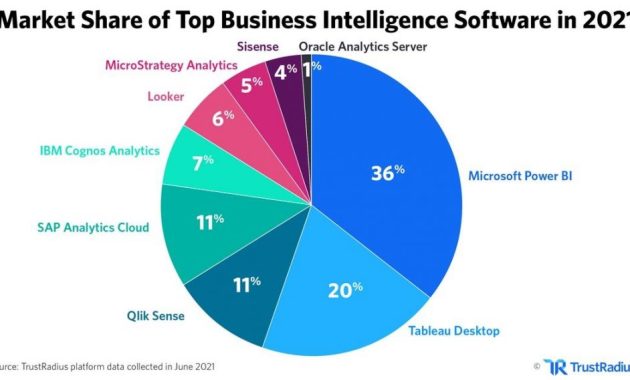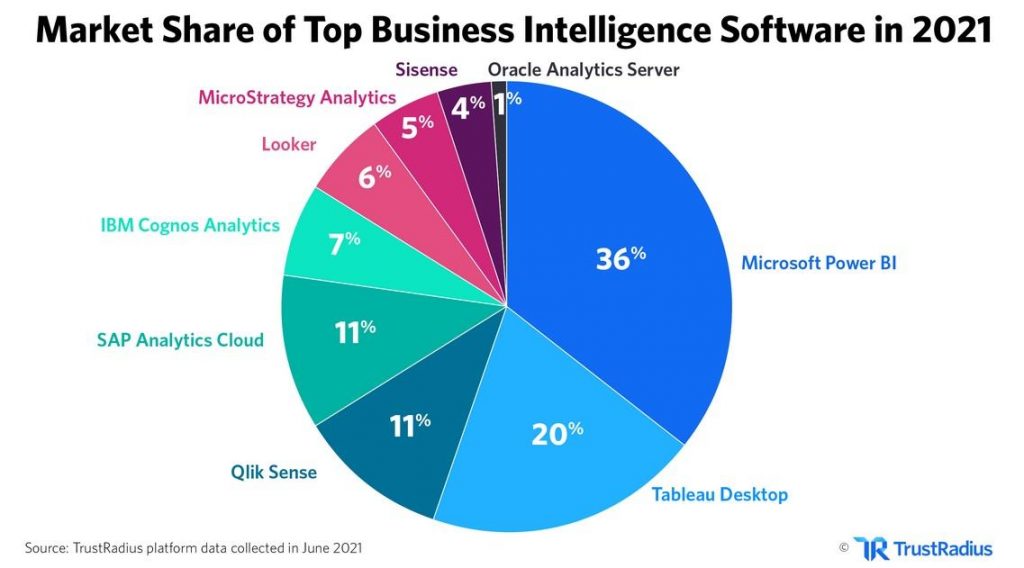
Mastering 12 Business Intelligence Tools That Drive Revenue: A Strategic Guide
In today’s data-driven landscape, businesses are drowning in information. The challenge isn’t just gathering data, but extracting meaningful insights. This is where business intelligence (BI) tools come into play. They transform raw data into actionable strategies, driving revenue growth and enhancing operational efficiency. This guide explores 12 powerful business intelligence tools, equipping you with the knowledge to select and implement the right solutions for your organization. We’ll delve into their functionalities, benefits, and how they can revolutionize your approach to data analysis and decision-making. The ultimate goal is clear: to help you master these tools and leverage them to significantly boost your revenue.
Understanding the Power of Business Intelligence
Business intelligence goes beyond simple reporting. It’s a comprehensive process. It involves collecting, analyzing, and interpreting data to inform strategic decisions. Effective BI provides a clear picture of your business’s performance, identifies trends, and uncovers opportunities for improvement. This leads to better resource allocation, improved customer satisfaction, and, ultimately, increased revenue. The right tools are crucial to unlock this potential.
Essential Considerations When Choosing BI Tools
Before diving into specific tools, consider your needs. What are your key performance indicators (KPIs)? What data sources do you need to integrate? What level of technical expertise do you have within your team? These questions guide your selection. Consider the following factors:
- Scalability: Can the tool handle growing data volumes?
- Ease of Use: Is the interface intuitive for your team?
- Integration: Does it integrate with your existing systems?
- Reporting Capabilities: Does it offer the reports you need?
- Cost: Is the pricing model aligned with your budget?
- Support: Does the vendor offer adequate support and training?
Top 12 Business Intelligence Tools for Revenue Growth
Now, let’s explore 12 leading business intelligence tools. These tools offer a diverse range of features. They cater to various business needs and budgets. Each tool can be a game-changer if implemented correctly.
Tableau
Tableau is a widely recognized leader in the business intelligence space. It offers powerful data visualization capabilities. It allows users to create interactive dashboards and reports. Tableau excels in connecting to diverse data sources. It provides a user-friendly interface, making it accessible to both technical and non-technical users. Its strength lies in its ability to transform raw data into compelling visual narratives. This helps you to quickly identify trends and insights that drive revenue.
Microsoft Power BI
Microsoft Power BI is a cost-effective business intelligence solution. It integrates seamlessly with other Microsoft products. Power BI provides a comprehensive suite of features. It includes data modeling, data visualization, and interactive dashboards. It’s a strong choice for organizations already invested in the Microsoft ecosystem. Power BI is a versatile tool. It offers various levels of complexity to fit specific business needs. Power BI is also very effective at driving revenue through its reporting capabilities.
Qlik Sense
Qlik Sense is known for its associative data modeling engine. This engine allows users to explore data from multiple angles. It uncovers hidden relationships and patterns. Qlik Sense offers a user-friendly interface. It provides advanced analytics capabilities. It makes it a powerful tool for data discovery and analysis. This helps to identify opportunities for revenue growth.
Sisense
Sisense is a business intelligence platform designed for complex data. It provides in-memory processing. This allows for fast data analysis and reporting. Sisense excels in handling large datasets. It offers advanced analytics features. It’s a good choice for organizations with high data volumes. Sisense can significantly impact revenue through its advanced analytics capabilities.
Looker (Google Cloud)
Looker, now part of Google Cloud, is a modern business intelligence platform. It focuses on data modeling and data governance. Looker enables organizations to create a single source of truth. It promotes consistent data definitions across the organization. It’s ideal for organizations prioritizing data accuracy and collaboration. Looker is a great tool to increase revenue through data-driven decision-making.
ThoughtSpot
ThoughtSpot is a search-driven business intelligence platform. It allows users to ask questions in natural language. The platform then provides instant insights. ThoughtSpot is user-friendly. It makes data analysis accessible to everyone. It’s an excellent choice for organizations wanting to empower non-technical users. ThoughtSpot can drive revenue by enabling quick access to critical information.
Domo
Domo is a cloud-based business intelligence platform. It provides a unified view of all your data. Domo offers real-time dashboards and collaboration tools. It’s ideal for organizations seeking a comprehensive solution. Domo helps in revenue growth by providing a holistic view of business performance.
Zoho Analytics
Zoho Analytics is a user-friendly and affordable business intelligence tool. It’s suitable for small and medium-sized businesses. It integrates seamlessly with Zoho’s other applications. Zoho Analytics offers data visualization and reporting features. It’s a great choice for businesses looking for a simple and effective solution. Zoho Analytics is known for driving revenue through its intuitive user interface.
Klipfolio
Klipfolio is a cloud-based business intelligence dashboarding tool. It allows users to build custom dashboards. Klipfolio connects to various data sources. It provides real-time data visualization. It’s ideal for organizations that need to monitor key metrics. Klipfolio is known for driving revenue through its real-time monitoring capabilities.
Yellowfin
Yellowfin is a business intelligence platform focused on data storytelling. It provides features for data discovery, visualization, and collaboration. Yellowfin’s emphasis on storytelling helps users translate data into actionable insights. This tool can drive revenue by helping businesses understand data better.
MicroStrategy
MicroStrategy is an enterprise-level business intelligence platform. It offers advanced analytics capabilities. MicroStrategy is suitable for large organizations with complex data needs. It provides robust features. It is a complex tool that can drive revenue if used properly.
SAP Analytics Cloud
SAP Analytics Cloud is a cloud-based business intelligence platform. It integrates with SAP’s other solutions. SAP Analytics Cloud provides a comprehensive suite of features. It includes data visualization, planning, and predictive analytics. It is a powerful tool. It drives revenue through its comprehensive capabilities.
Implementing BI Tools for Maximum Impact
Selecting the right tools is only the first step. Successful implementation requires careful planning and execution. Consider these key steps:
- Define Your Goals: Clearly identify your objectives. What do you want to achieve with BI?
- Data Integration: Connect the tool to your data sources.
- Data Modeling: Organize and structure your data.
- Dashboard Design: Create intuitive and informative dashboards.
- Training and Adoption: Train your team to use the tool effectively.
- Monitoring and Optimization: Continuously monitor performance and refine your approach.
Measuring the ROI of Your BI Investment
To justify your investment in business intelligence tools, you need to measure its impact. Track key metrics. These include:
- Increased Revenue: Monitor sales growth and identify revenue drivers.
- Improved Efficiency: Track operational costs and identify areas for optimization.
- Enhanced Customer Satisfaction: Measure customer feedback and retention rates.
- Reduced Costs: Identify areas for cost savings.
- Faster Decision-Making: Assess the time it takes to make critical decisions.
By continuously monitoring these metrics, you can demonstrate the value of your BI investment and ensure you’re on track to achieve your revenue goals.
Conclusion: The Future of Business Intelligence and Revenue
Business intelligence tools are no longer a luxury. They’re a necessity for businesses seeking to thrive in a competitive market. By mastering these tools and implementing them strategically, you can unlock the power of your data. You can make informed decisions. You can drive revenue growth and achieve sustainable success. The future of business is data-driven. Embrace the power of business intelligence. Position your organization for lasting prosperity. The tools discussed in this article represent a powerful arsenal. They will help you navigate the complexities of the modern business world. They will help you transform data into a powerful engine for revenue generation. Make informed choices. Implement the right solutions. Watch your revenue soar.
[See also: Related Article Titles]

